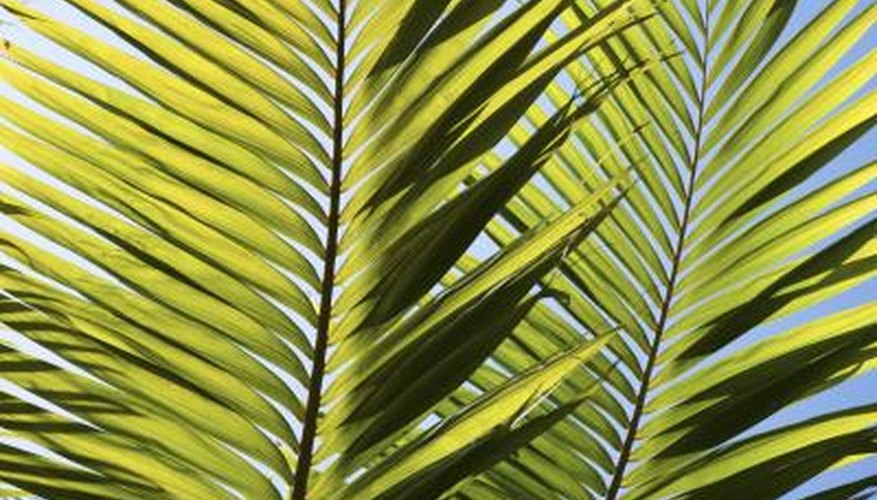Palm trees often grow in areas where frequent rainfall, tropical storms, and high levels of humidity are the norm. But these environmental factors contribute to the development of diseases that produce black spots on the palm tree, often defoliating the leaves and -- in extreme scenarios -- killing the tree.
Graphiola Leaf Spot
Graphiola leaf spot, also commonly referred to as false smut, is brought on by a pathogen of the Graphiola species, and is most prevalent in palm trees planted in geographic locales where the humidity level is exceptionally high. The Sabal palmetto, Chinese fan palm, and Washington palm are among the species most frequently affected. The disease manifests on the leaves -- fronds -- of a palm in the form of tiny, black spots that possess the appearance of a wart.
Prevention/Solution
These black spots appear on both sides of the leaves and -- just like a wart -- are sometimes accompanied by the sprouting of a small, hairlike structure from within the growth. Young fronds typically display no symptoms of the problem. The rate of infection from this disease can be minimised by allowing significant space between trees in order to promote good air circulation and thus a reduction in the level of humidity in the surrounding air.
Bud Rot
A number of fungal pathogens of the Phytophthora and Thielaviopsis species, in addition to bacterial pathogens, cause the disease referred to as bud rot. Symptoms display as black lesions on the buds and young leaves of a palm tree. Periods of extreme rain, especially tropical storms, heighten the likelihood of the development of bud rot, while bacterial bud rot usually comes to fruition when the bud has been injured by cold weather. Fronds will wilt and the infected area eventually appears and feels slimy to the touch.
- A number of fungal pathogens of the Phytophthora and Thielaviopsis species, in addition to bacterial pathogens, cause the disease referred to as bud rot.
- Periods of extreme rain, especially tropical storms, heighten the likelihood of the development of bud rot, while bacterial bud rot usually comes to fruition when the bud has been injured by cold weather.
Bud Rot Management
Mature leaves sickened by the disease still remain green for several months before dying. In extreme cases, the entire tree may defoliate, leaving only the trunk remaining. Once bud rot attacks a palm tree, the recovery of the specimen is unlikely. The best preventive method is to avoid overhead irrigation and never apply water to the leaves directly. Palm trees that are infected with bud rot should be removed and destroyed to prevent the spread of the pathogen.
- Mature leaves sickened by the disease still remain green for several months before dying.
